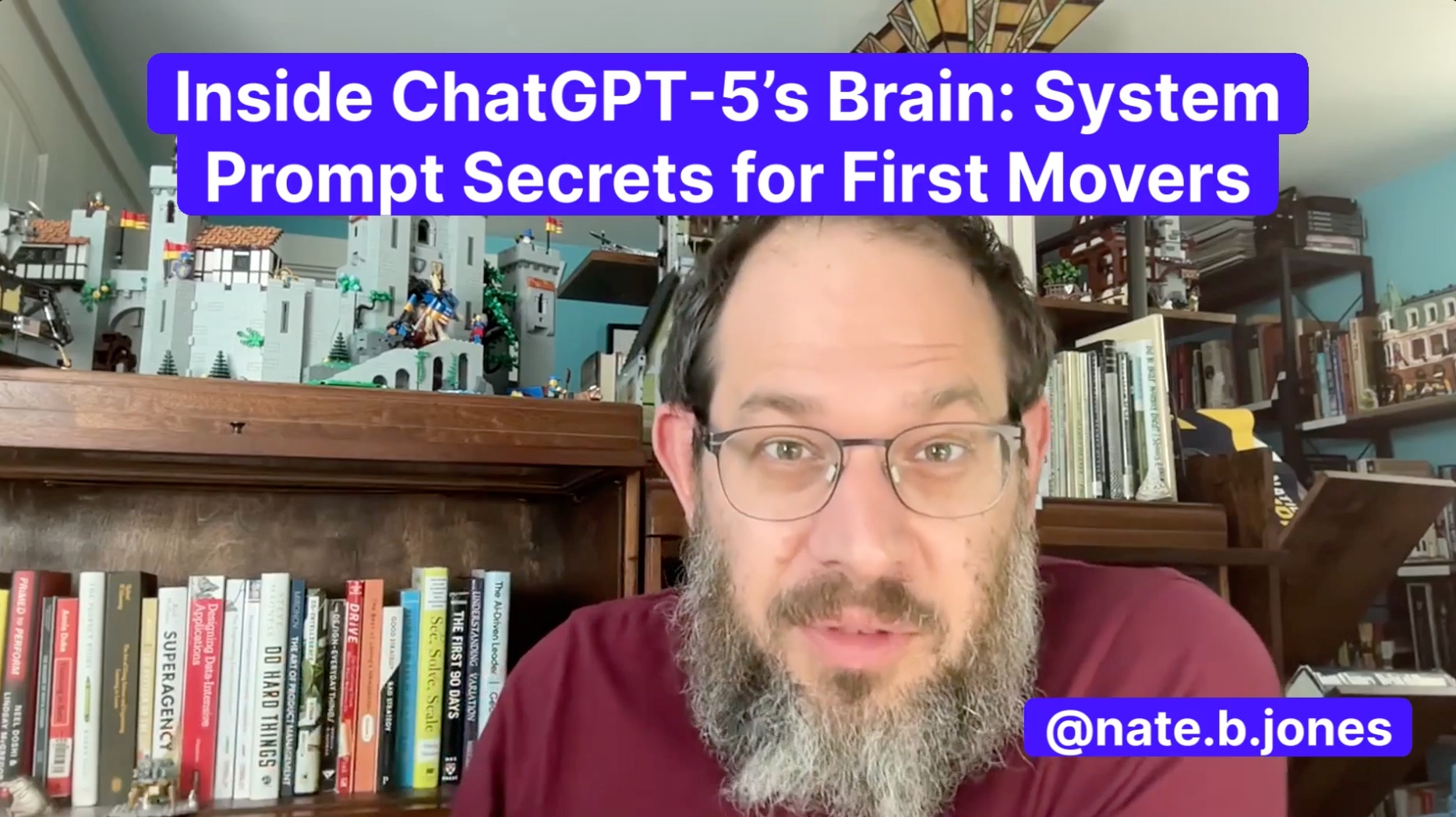As soon as ChatGPT-5’s system prompt leaked, I had to take a look.
Typically system prompts are like skeleton keys—they reveal prompting patterns by what they include and by what they leave out, and close analysis essentially gives you a roadmap for future work from the company. Since this is OpenAI’s biggest release of the year, I expected a pile of good stuff hidden in the prompt, and boy was I right!
I've been teaching structured prompting and reasoning techniques here on Substack for awhile now. The fundamentals haven't changed—clarity, specificity, constraint definition, and systematic thinking remain the foundation of effective AI interaction.
But GPT-5 is the first model I've worked with that's genuinely agentic by default. Where previous models would pause for clarification or seek permission, GPT-5 just executes. It takes the structured prompting principles I've always taught and pushes them to their logical conclusion: if you're going to get decisive action instead of helpful conversation, you better nail your specifications upfront.
This article documents what I've learned adapting proven prompting methodologies to a model that defaults to "ship" rather than "discuss." The core techniques—assumption management, constraint specification, output formatting—are all familiar territory. What's new is applying them to an AI that won't give you multiple chances to refine your request.
The system prompt analysis reveals exactly how OpenAI configured this agentic behavior, which explains why traditional iterative prompting feels clunky with GPT-5. Understanding these architectural choices lets you work with the model's biases instead of against them.
You'll find practical templates that build on solid prompting fundamentals but account for GPT-5's execution-first mentality. The tool policy management, Canvas workflows, and failure mode prevention all extend techniques you likely already use, just adapted for a more autonomous system.
This isn't about learning prompting from scratch—it's about evolving your existing skills for AI that acts more like a capable and very literal junior employee (of yours) vs a conversational research assistant. The strategic implications are significant: this level of agency represents where AI systems are headed, and the teams that adapt their delegation patterns first will have substantial advantages.
The shift from conversational AI to agentic AI is real, and it requires us to level up our prompting specification skills accordingly.
Dig in to the prompting riches here and let’s have fun!
Listen to this episode with a 7-day free trial
Subscribe to Nate’s Substack to listen to this post and get 7 days of free access to the full post archives.













